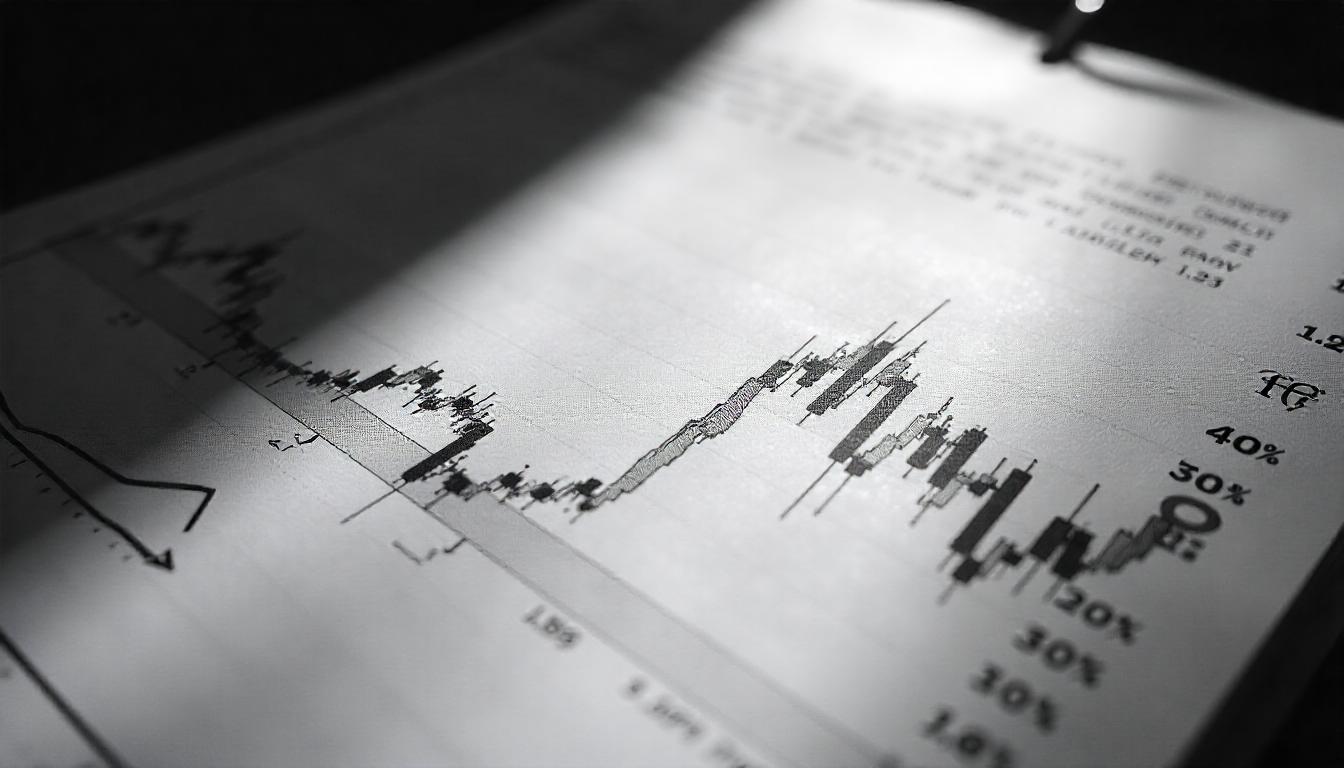You’ve been here before. You find a strategy, backtest it to death, tweak a few parameters, and go live. At first, the gains roll in, and confidence builds. But then—without warning—the losses hit. You chalk it up to bad luck, maybe an anomaly in the market. You double down. And then it happens again. Slowly, you start bleeding capital, and now you’re left wondering: What went wrong?
What if the problem wasn’t the market but your own blind spots?
In this article, we’re not just going to talk about the usual technical failures. We will dive into the deeper, more uncomfortable reasons why your strategy is failing—and how you can spot the warning signs before it’s too late.
1. You’re Married to the Idea of Your Strategy
Let’s face it—after hours of development and testing, you get emotionally attached to your strategy. You’ve poured so much time and energy into it that you feel compelled to defend it, even when it’s not performing.
This emotional investment blinds you to the flaws in your system. You start making excuses like, “The market is just in a weird phase,” or, “This will recover once the trend shifts.”
Why is this a problem? Ego-driven trading is dangerous because it stops you from being objective. You become a trader looking for reasons to prove your strategy right rather than a trader trying to find where it could be wrong.
How to Snap Out of It:
- Set brutal stop-loss rules for strategies: If your strategy dips beyond a certain threshold, shut it down without hesitation. No matter how much you love it.
- Have a “failure date”: Set a specific time window for your strategy to perform. If it doesn’t meet key benchmarks by that time, move on. This keeps you from hanging on too long.
- Get an outside perspective: Show your strategy to a fellow trader and ask them to poke holes in it. Fresh eyes are invaluable.
Pro Tip:
Seasoned traders know that adaptability is more important than being right. The best strategies aren’t the ones that were perfect from the start but those that could adapt and evolve with the market. Don’t get attached to any single iteration—your loyalty should be to profitability, not the strategy itself.
2. You’re Chasing the Market’s Tail
This is a trap even veteran traders fall into: you spot a strategy that worked exceptionally well during a specific market condition and decide to replicate it. You’re convinced it’s the Holy Grail because it raked in profits during the recent bull market or last month’s volatility. But here’s the truth—you’re chasing yesterday’s market.
Why is this a red flag? Strategies based on recent market performance are always a step behind. Markets evolve, and by the time you catch on to what’s worked, that edge is gone.
The only thing worse than losing in the market is losing while believing your system was guaranteed to win.
How to Break the Cycle:
By using AI to backtest, optimize, and validate your trading strategy, you get unbiased, data-driven insights into your strategy’s real potential. Coinquant uses historical market data to simulate thousands of trades, uncover patterns you might miss, and highlight any hidden flaws in your approach before you ever risk real capital.
Pro Tip:
Automation not only improves accuracy but also saves time, allowing you to focus on refining your strategy instead of manually crunching numbers.
Coinquant helps ensure that your strategy isn’t just a product of your gut feeling but one grounded in reliable data, giving you the edge in fast-moving markets.
3. Your Risk Management is a Fantasy
Let’s get real—many traders talk about risk management, but few actually implement it in the brutal, no-nonsense way that’s required.
The Harsh Reality: You might believe you’re managing risk, but in the heat of the moment, when your strategy hits turbulence, you start to deviate.
You widen your stop-loss, convince yourself to hold just a little longer, or double down on a losing position to “average out.” Before you know it, your losses snowball.
How to Fix It:
- Create hard, non-negotiable limits: Set firm rules for when you’ll cut a trade, no matter what. These limits should be tied to your overall capital, not just individual trades.
- Use automation to enforce discipline: Take yourself out of the equation by automating stop-losses, so you can’t ignore them. Platforms like Coinquant can automate risk management and prevent emotional overrides.
Pro Tip:
Your strategy’s survival hinges on risk management. The traders who last aren’t the ones with the flashiest strategies—they’re the ones who limit losses and survive the bad months. Every trade should be built on a foundation of risk control, not just profit potential.
4. You’re Blind to Hidden Costs
Many traders, even experienced ones, ignore the hidden costs of trading that silently chip away at profits. Slippage, liquidity issues, commissions, and the bid-ask spread all eat into your returns in ways that can be devastating over time.
Why is it a silent killer? You might have a strategy that looks perfect on paper, but once you factor in real-world execution costs, your profit margin evaporates.
Worse still, these factors can multiply during periods of high volatility, when your strategy is supposed to thrive, but instead suffers.
Solution:
- Backtest with realistic cost models: Incorporate slippage, commissions, and spreads into your backtesting. Don’t rely on perfect fills or ideal conditions.
- Trade liquid markets: Avoid strategies that are highly sensitive to execution in thinly traded assets. Liquidity can dry up fast, and your ability to execute your strategy will crumble.
Real-World Insight:
A trader once ran a high-frequency strategy that crushed backtests but overlooked the true impact of slippage and commissions. In reality, his profits evaporated after these hidden costs were factored in. Test as though you’re paying double for every trade, and see if your strategy still holds up.
5. You Haven’t Accounted for Trader Burnout
A point few talk about: trader burnout. It’s easy to overlook the toll that constant vigilance and high-frequency trading can take on your mental health. Over time, the pressure of executing a strategy can lead to exhaustion, tunnel vision, and emotional decision-making.
Even the best strategy will fail if the trader running it is burnt out.
Why does this happen? Your strategy might demand too much from you, especially if it requires constant monitoring or quick, real-time decisions. Over time, this strain wears down even seasoned pros, leading to mistakes, oversights, and emotional trades.
Solution:
- Automate what you can: Free up mental space by automating the more repetitive parts of your strategy. Let the machine handle the grunt work, while you focus on high-level decision-making.
- Step back regularly: Take deliberate breaks. If you’re constantly glued to your screen, you’re more likely to make costly errors.
Pro Tip:
Trading is a long game. The biggest threat to your strategy might not be the market—but you. Avoid burnout by creating routines that allow you to step back, automate processes, and keep your mind sharp.
6. You’ve Lost Sight of the Market’s Bigger Picture
If your strategy fails, it’s often because you’re micromanaging market moves and missing the forest for the trees. The market is not a fixed entity—it’s a living, breathing organism. Traders who cling too tightly to short-term setups or rigid systems often fail to see broader trends and shifts that render their strategies obsolete.
Why is this fatal? Your strategy might rely too heavily on short-term signals, ignoring bigger macroeconomic shifts or fundamental market changes. You might miss the signs of a larger cycle—like a shift from growth to value stocks, or the start of a prolonged bear market. By the time you realize, it’s too late.
How to Zoom Out:
- Incorporate macro analysis: Don’t just rely on technicals. Pay attention to broader market trends, geopolitics, and economic indicators that could fundamentally shift the market environment.
- Reassess regularly: Make it a habit to review your strategy every few months, asking, “Is this still relevant given the current market landscape?”
Real-World Insight:
Many traders were blindsided in early 2022 when inflation concerns and rate hikes crushed tech-heavy strategies that had performed well for years.
Those focused too much on short-term signals missed the broader economic shift, leaving them exposed to massive drawdowns.



